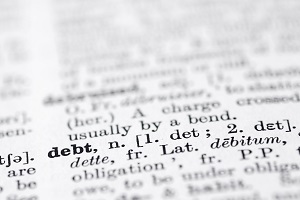 Bankruptcy is and has always been intended as a way for people who are struggling with debt to resolve their debt problems and receive the relief they need to rebuild their lives. In order to help people and businesses overcome debt problems, Congress enacted bankruptcy laws to provide a legal means of handling debt. It divided bankruptcies into six different chapters. Each bankruptcy chapter has its own set of requirements for eligibility as well as its own advantages and disadvantages for the debtors. Knowing what chapter of Minnesota bankruptcies to file is something that an experienced bankruptcy attorney can help you determine based upon your unique financial situation and your long-term financial goals.
Bankruptcy is and has always been intended as a way for people who are struggling with debt to resolve their debt problems and receive the relief they need to rebuild their lives. In order to help people and businesses overcome debt problems, Congress enacted bankruptcy laws to provide a legal means of handling debt. It divided bankruptcies into six different chapters. Each bankruptcy chapter has its own set of requirements for eligibility as well as its own advantages and disadvantages for the debtors. Knowing what chapter of Minnesota bankruptcies to file is something that an experienced bankruptcy attorney can help you determine based upon your unique financial situation and your long-term financial goals.
The Six Types of Minnesota Bankruptcies
The following is a short description of the six chapters of bankruptcy available to debtors in Minnesota and throughout the United States. It is important to note that some debtors are eligible to file more than one chapter of bankruptcy. You should always consult with a bankruptcy attorney prior to deciding what chapter of bankruptcy is right for you.
Chapter 7 Liquidation
Chapter 7 is known as a “liquidation” because the trustee appointed to the case will liquidate any non-exempt assets of the debtor to repay the debtor’s unsecured debts. Not every Chapter 7 case results in the sale of assets. In fact, most Chapter 7 cases filed in Minnesota are what we call “no asset” cases meaning that the debtor does not lose any assets at all. He keeps all of his property while erasing most if not all of his debts.
Chapter 7 is available to individuals, couples and businesses. It is important to note that when a business files a Chapter 7 bankruptcy, the business must close. If the business wants to remain open, it may consider filing a Chapter 13 case (self-employed debtors) or a Chapter 11 case.
Chapter 13 Reorganization
Chapter 13 bankruptcy is referred to as a “wage earner’s plan” because the debtors must have a regular income in order to fund a Chapter 13 plan. The debtor makes monthly installment payments to a Chapter 13 trustee for 36 to 60 months to repay all or part of his or her debts. As part of the bankruptcy filing, the debtor proposes a bankruptcy plan that details how he or she will repay the debts. Once the plan is confirmed by the court, the trustee will use the monthly payments to pay the debts according to the terms of the bankruptcy plan. Once the debtor makes all payments under the plan, any remaining unsecured debts that are eligible for discharge will no longer be owed by the debtor.
A Chapter 13 plan can help save a business because it is also available to self-employed individuals whose business is still operating and generating income. A Chapter 13 bankruptcy is an excellent option for debtors who are earning income but do not have sufficient income to repay all of their bills in full each month.
Chapter 11 Reorganization
A Chapter 11 case is typically reserved for big businesses and corporations (i.e. department stores, airlines, etc.). However, individuals whose debts exceed the maximum debts for a Chapter 13 or who have substantial income and assets may also file a Chapter 11 bankruptcy case. The debtor also proposes a plan under this chapter; however, the plan must be voted on by the creditors rather than simply being approved by the court as in a Chapter 13 case. The creditors in a Chapter 11 case have the opportunity to vote on the proposed plan. If there are not enough votes in favor of the plan, the debtor must propose a new plan.
Another major difference is that in a Chapter 11 case, the debtor pays the creditors directly each month rather than paying a trustee who then disburses the payments as in a Chapter 13 case. Once the plan is confirmed, the debtor pays each creditor according to the terms of the confirmed plan until the creditor has been paid the amount agreed upon. Any remaining balance will be discharged upon the completion of the plan.
Chapter 12 Family Farmer or Family Fisherman Bankruptcy
Chapter 12 is designed for use by family farmers or a family fisher with a regular income. It is somewhat like a Chapter 13 case but it is limited to certain types of debtors. Congress combined the features of the other chapters of the Bankruptcy Code into a framework that would help family farmers and fishermen successfully reorganize their debts to recover from a financial hardship and continue their business.
Chapter 9 Municipality Bankruptcy
A Chapter 9 bankruptcy is designed as a way for municipalities to reorganize debt. Examples include cities, towns, villages, counties, school districts, municipal utilities and taxing districts. The bankruptcy case protects the municipality from its creditors while it negotiates and develops a plan for adjusting its debts and moving forward. Chapter 9 cases are very complex and require attorneys who are very familiar with bankruptcy, especially a municipality bankruptcy case.
Chapter 15 Ancillary and Other Cross-Border Cases
Chapter 15 is the newest bankruptcy chapter. The purpose of Chapter 15 is to provide a means to handle cases involving debtors, claimants, assets and other parties of interest involving more than one country. An example would be a foreign corporation filing a bankruptcy in its home country but also filing an ancillary case in the United States under Chapter 15 because the company has assets and/or creditors in the United States. Chapter 15 gives a foreign debtor or creditor the ability to have the matter heard within the United States Judicial System.
For more information about bankruptcy, sign up for our free monthly eNewsletter.



